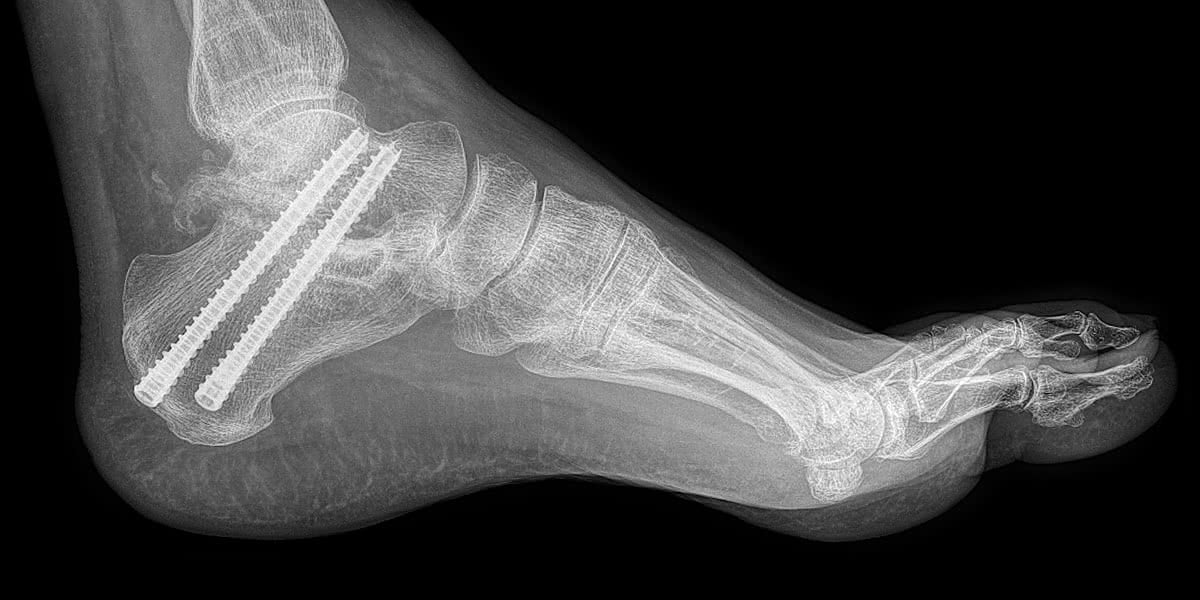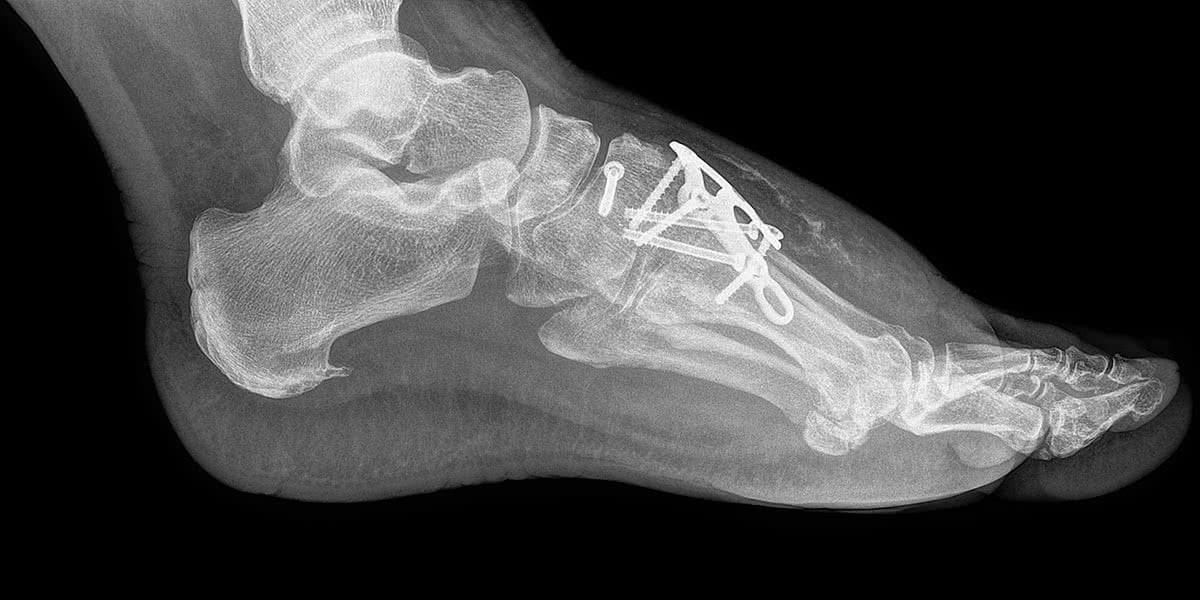Introduction
Arthritis may develop in any of the many joints in the foot. For most of these there is no such thing as a replacement or arthroplasty option, and the surgery of choice is to fuse the joint(s). Most commonly affected are the “subtalar”, “talo-navicular” and “tarsometatarsal” joints.
See Anatomy of the Foot and Ankle.
In some cases, the stiffness from these fusions is hardly noticeable, in others it can have mild to moderate impacts on foot function or limitations on activities, but the elimination of pain vastly outweighs the drawbacks from the stiffness. Patients can expect to have (near) complete resolution of their pain in most cases, be able to walk unlimited distances, and return to many other activities they’ve given up because of their pain.
Indications
In most cases the reason for surgery is severe pain caused by arthritis. This may be due to degenerative osteoarthritis, rheumatoid, gout or other causes. The time to consider undergoing surgery is when the pain in your joint(s) is so severe that it is having a significant impact on your day to day activities. It is important that you have tried all reasonable non-surgical treatments, as some patients with severe arthritis on their x-rays can still cope quite well without surgery. It is not until your pain is fairly constant and severe that the potential benefits of surgery outweigh the risks and make it worthwhile going through the recovery period.
Patients with diabetes, rheumatoid arthritis, or who smoke, are at a much higher risk of complications from surgery and may choose to avoid an operation at all
Preoperative Instructions
You will be given a full briefing of how to prepare for your procedure well in advance of the day of surgery. In very general terms you will need to...
- Let our team know what other medication you are taking and follow our guidelines on taking these medications in the days/weeks before surgery.
- This is particularly pertinent to blood thinning medications such as aspirin, warfarin, clopidogrel and Xarelto.
- Let our team know if you develop symptoms of any illness (including a cold or fever) or if you believe you may be pregnant.
- If you smoke, stop smoking ideally several days or weeks ahead of the procedure, but at the very least not smoke after midnight the night before surgery.
- Maintain your strength and mobility as best as possible.
- Not eat or drink anything for a minimum of 8 hours prior to admission.
- Bring all available and relevant imaging with you to hospital.
Procedure


The specifics of the operation to fuse each of the particular foot joints vary somewhat. In general terms, the joint is exposed, the surfaces excised and the bone ends roughened before positioning the joint appropriately and holding the bones firmly together with plates, screws, staples or a combination of these. Bone graft from elsewhere in the body or synthetic graft materials may be used to fill gaps or supplement the biological activity of the fusion. X-rays may be used during the surgery to check position of the hardware. Incisions are typically closed with dissolving stitches under the skin. A cam walker boot or cast is added for immobilization.
Postoperative Instructions
Immediately after surgery, the foot must be kept elevated (above the level of the heart) to reduce swelling. This is especially important over the first 2 weeks. Patients also receive pain medication at this time. Patients typically stay for 2-3 nights depending on their mobility and discomfort after the operation.
The fusion process normally takes 6-8 weeks to fuse sufficiently for you to be able to put weight on the foot (although in some cases it can take up to 12 weeks). During this time you will need to use various aids to get about, such as scooters, crutches and walkers, and other aids to continue daily life, such as railings and ramps. You will also probably need some assistance with day-to-day activities and it may be easier if your bedroom is upstairs, to transfer your bed to the ground floor.
You may not be allowed to drive during this period. If it is the left foot and you drive an automatic, this might be allowed earlier.
Around two weeks after surgery the wounds are checked, but it is very important not to put any weight on the foot for at least 6 weeks. After this period, x-rays will be checked, and if all is going well it will be possible to start putting weight on the foot in a cam walker boot. Usually by 10-12 weeks the bones are well healed together and you can start walking without the boot.
Risks
All surgery carries with it some form of risk. Common risks that apply to all surgery, including all fusions of the bones of the feet, are...
- Bleeding.
- Formation of a blood clot (“DVT” or deep vein thrombosis) Pieces of clot in the leg can break off and lodge in the lungs causing a pulmonary embolism. This can be very serious, and in rare cases even cause death.
- Infection.
- Nerve damage.
- Difficulty getting the wound to heal.
- Abnormal pain reactions or nerve hypersensitisation known as complex regional pain syndrome (CRPS).
Risks specifically related to this procedure include...
- Failure of the bones of the joint to knit together (’nonunion’) The risk of this is around 1 in 10 and if this occurs, a second procedure will be necessary using a bone graft.
- Increased risk of arthritis in other joints - this is due to greater loads being placed on these joints (this is a longer-term risk where symptoms, if they do appear, generally take many years to develop).
- Malposition of the joint causing abnormal pressure or stress elsewhere in the foot. This could require a second operation to adjust.
Dr Callahan will be able to discuss all of the details relating to risks and benefits of the procedure at your initial meeting.
Treatment Alternatives
There are usually many other non-surgical management options. These would include things such as pain relieving medication, specialized shoes, orthotics, braces and physiotherapy.
